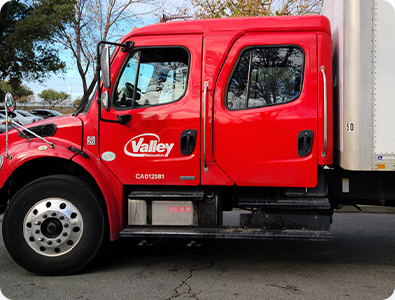In the dynamic landscape of business, the need for commercial relocations is an inevitable facet of growth, adaptation, and strategic development. Whether prompted by expansion, consolidation, or the pursuit of enhanced operational efficiency, businesses often find themselves orchestrating moves that transcend mere physical transitions.
The process of commercial relocation is inherently complex, involving meticulous planning, coordination, and execution. Yet, amid the myriad logistical considerations, it is crucial not to overlook the human element—the heartbeat of any organization.
The success of a commercial relocation extends beyond the mere transfer of assets and infrastructure. It hinges on the seamless integration of the workforce into a new environment and the preservation of strong relationships with valued customers.
Moving an entire business goes beyond the physical movement of desks and equipment. It disrupts the familiar rhythms and routines of employees, impacting their sense of stability and familiarity. Recognizing and understanding this human impact is fundamental to orchestrating a relocation that minimizes disruptions and ensures a smooth transition for all involved parties.
In this blog, we delve into the critical significance of the human element in commercial relocations, shedding light on how prioritizing employee and customer satisfaction can elevate the entire relocation experience.
The Role of Employees in Commercial Relocations: Navigating Stress and Anxiety
Commercial relocations signify more than just a physical change of office space; they embody a profound transformation that directly impacts the individuals at the heart of an organization—the employees.
Recognizing the inherent stress and anxiety that often accompany such transitions is crucial for businesses aiming to navigate the human element of relocations successfully.
Employee Stress and Anxiety During Relocations
Changes in the Work Environment
One of the primary sources of stress for employees during commercial relocations stems from the radical shifts in their work environment. Familiarity fosters a sense of security, and the prospect of moving to an unknown or significantly different setting can evoke a range of emotions, from discomfort to outright anxiety.
Employees may grapple with concerns about the commute, adjustments to the new office layout, or even the simple act of finding their way around the new space.
Uncertainty about Job Security
Relocations can inadvertently trigger concerns about job security among employees. The fear of potential downsizing or restructuring in the wake of a move can contribute significantly to stress levels. Clear communication from leadership becomes paramount in dispelling these uncertainties and fostering a sense of stability among the workforce.
Strategies for Managing Employee Stress
Clear Communication from Leadership
Open and transparent communication from leadership is the bedrock upon which employee confidence and trust are built. Leaders must proactively address concerns related to the relocation, providing clear and timely information about the reasons behind the move, the anticipated timeline, and the potential impact on job roles.
Establishing a channel for ongoing dialogue can empower employees to express their concerns and receive reassurance, fostering a sense of inclusion in the decision-making process.
Employee Involvement in the Planning Process
Empowering employees by involving them in the planning process can be a transformative strategy. Soliciting their input on aspects like office layout, amenities, and even the selection of the new location can instill a sense of ownership and control. This participatory approach not only addresses the practical concerns of the workforce but also nurtures a collaborative spirit, making employees feel valued and heard.
Supportive Resources and Counseling Services
Recognizing the emotional toll that relocations can take, businesses should offer supportive resources and counseling services. Employee assistance programs, workshops on stress management, and access to counseling services can provide valuable support during the transition.
By acknowledging and actively addressing the emotional aspect of relocations, businesses can demonstrate a genuine commitment to the well-being of their employees.
Strategies for Enhancing Employee Satisfaction: Putting Employees at the Center of Relocation Planning
In the intricate tapestry of commercial relocations, the satisfaction and well-being of employees stand as pivotal indicators of success. By adopting employee-centric approaches to relocation planning and engagement initiatives, businesses can not only navigate the complexities of change more smoothly but also cultivate a positive and resilient organizational culture.
Employee-centric Relocation Planning
Involving Employees in Decision-Making Processes
One of the foundational principles for enhancing employee satisfaction during relocations is involving them in decision-making processes. Employees are not just passive participants in the move; they are valuable stakeholders with unique insights and perspectives. By soliciting their input on matters such as office layout, amenities, and logistical considerations, businesses can empower employees to contribute to the success of the relocation, fostering a sense of ownership and collective responsibility.
Providing Adequate Support and Resources
Relocation can be a challenging experience for employees, both professionally and personally. Recognizing and addressing these challenges is essential for enhancing satisfaction. Providing comprehensive support, such as assistance with housing, transportation, and local orientation, can ease the burden on employees.
Additionally, ensuring access to necessary resources, whether in the form of information or practical assistance, demonstrates a commitment to the well-being of the workforce.
Employee Engagement Initiatives during Relocations
Team-building Activities
Maintaining a sense of camaraderie and team spirit becomes even more crucial during the upheaval of relocation. Team-building activities, both within and outside the workplace, can play a vital role in fostering connections among employees. From collaborative projects to social events, these activities not only alleviate the stress associated with the move but also contribute to a positive and cohesive organizational culture.
Recognition and Rewards for Employees’ Efforts
Relocations often demand extra effort from employees as they balance their regular responsibilities with the challenges of transition. Recognizing and rewarding these efforts is a powerful strategy for enhancing satisfaction.
Whether through public acknowledgments, performance bonuses, or personalized expressions of gratitude, businesses can reinforce the value they place on the dedication and hard work of their employees, fostering a positive and motivated workforce.
Customer Satisfaction in Commercial Relocations: Navigating Disruptions with Finesse
In the intricate dance of commercial relocations, where every step impacts not just internal stakeholders but also valued customers, preserving customer satisfaction becomes a critical objective. Understanding the customer experience during relocations and implementing best practices to minimize disruptions are pivotal for maintaining strong business relationships.
Customer Experience during Relocations
Disruptions to Services
Relocations inherently bring about operational changes that can disrupt the seamless delivery of products or services. Whether it’s delays in order fulfillment, temporary suspension of services, or adjustments to customer support channels, these disruptions can result in frustration and dissatisfaction among customers. Managing these transitions with precision is essential to safeguard the customer experience.
Communication Challenges
Effective communication is the linchpin of customer satisfaction during relocations. However, the very nature of a move—juggling logistics, timelines, and internal changes—can pose challenges in maintaining consistent and transparent communication with customers. The lack of information or unclear updates can breed uncertainty, eroding the trust that businesses have worked hard to build.
Best Practices for Maintaining Customer Satisfaction
Transparent Communication with Customers
Open and transparent communication is the cornerstone of a successful customer experience during relocations. Businesses must proactively inform customers about the impending move, the expected timeline, and any potential impact on the services they receive. Regular updates via various communication channels help manage expectations and demonstrate a commitment to keeping customers in the loop.
Minimizing Service Disruptions
While some level of disruption is inevitable during a commercial relocation, meticulous planning can help minimize the impact on customer services. Businesses should develop comprehensive continuity plans that address potential service interruptions. This may involve staggering the relocation process, ensuring backup systems are in place, and implementing measures to expedite the return to normal operations swiftly.
Addressing Customer Concerns Promptly
Customer concerns and queries are bound to arise during relocations. It’s imperative that businesses have dedicated customer support teams ready to address inquiries promptly and efficiently. Acknowledging customer concerns, providing clear and concise information, and offering solutions or alternatives where possible can go a long way in mitigating dissatisfaction.
Strategies for Enhancing Customer Satisfaction: A Blueprint for Proactive Engagement
In the realm of commercial relocations, where change is the only constant, maintaining customer satisfaction is an art form. By adopting proactive communication strategies and implementing robust service continuity measures, businesses can not only weather the storm of transition but also strengthen their customer relationships.
Proactive Communication with Customers
Keeping Customers Informed about the Relocation Process
Transparency is the linchpin of customer satisfaction during relocations. Keeping customers informed about every step of the relocation process is essential. Businesses should initiate communication well in advance, outlining the reasons for the move, expected timelines, and any potential impact on services. Regular updates, delivered through various channels such as email, social media, and website announcements, help manage expectations and demonstrate a commitment to keeping customers in the loop.
Addressing Customer Concerns and Questions
Relocations inevitably give rise to customer concerns and questions. Proactively addressing these issues with clear and empathetic communication is crucial. Establishing dedicated customer support channels specifically for relocation-related inquiries, and promptly responding to concerns, helps to quell uncertainties and reinforces the trust customers place in the business. A responsive approach not only mitigates dissatisfaction but can also turn challenges into opportunities to showcase exceptional customer service.
Service Continuity Measures
Minimizing Downtime and Disruptions
One of the primary concerns for customers during relocations is the potential disruption to services. Businesses must implement comprehensive plans to minimize downtime and disruptions. This may involve staggering the relocation process, ensuring backup systems are in place, and employing strategies to expedite the return to normal operations swiftly. By prioritizing service continuity, businesses demonstrate their commitment to delivering a consistent and reliable experience to their customers.
Offering Additional Support to Affected Customers
Recognizing the potential impact of relocations on customers, businesses can go the extra mile by offering additional support. This could include temporary service enhancements, discounts, or personalized assistance for customers directly affected by the relocation. Providing tangible support not only mitigates any inconvenience customers may experience but also reinforces the business’s dedication to customer satisfaction.
How Can Commercial Relocation Services Simplify the Move for Both Customers & Employees?
The prospect of a commercial relocation can be daunting for both employees and customers alike. However, with the right commercial relocation services in place, businesses can transform what might otherwise be a complex and stressful experience into a seamless and efficient transition. Here’s how these services can simplify the move for both employees and customers:
Streamlined Employee Relocation Services
Comprehensive Planning and Coordination
Commercial relocation services excel in meticulous planning and coordination. From assessing the unique needs of each employee to orchestrating the logistics of the move, these services ensure that the entire process is well-organized and tailored to individual requirements. This minimizes the burden on employees, allowing them to focus on their roles rather than the complexities of the move.
Relocation Support Programs
Top-notch commercial relocation services offer comprehensive support programs for employees. These may include assistance with housing arrangements, transportation logistics, and even orientation programs in the new location. By providing a holistic support system, these services alleviate the stress associated with relocation, fostering a smoother transition for employees.
Clear Communication Channels
Effective communication is at the core of successful relocations. Commercial relocation services establish clear communication channels between the service providers, employers, and employees. This ensures that everyone is on the same page regarding the relocation timeline, expectations, and any assistance that might be required.
Enhanced Customer-Focused Relocation Strategies
Customer-Centric Planning
Commercial relocation services extend their expertise to ensure a customer-centric approach. By thoroughly understanding the impact of the move on customers, these services devise relocation strategies that prioritize minimal disruption to services. This includes strategic planning to manage downtime, staggered transitions, and clear communication with customers to manage expectations.
Customized Service Continuity Plans
To maintain customer satisfaction, commercial relocation services develop customized service continuity plans. These plans are designed to minimize disruptions, whether through the use of backup systems, staggered relocation phases, or temporary service enhancements. This meticulous planning ensures that customers experience a seamless transition, with minimal impact on the quality and reliability of services.
Proactive Issue Resolution
Anticipating and addressing customer concerns is a hallmark of effective commercial relocation services. By proactively identifying potential issues and developing contingency plans, these services can swiftly resolve any challenges that may arise during the relocation process. This proactive approach not only minimizes customer dissatisfaction but also showcases a commitment to exceptional service.
Make The Move Smooth with Valley Relocation!
Having a difficult time moving your business from one corner to another? Make sure you check out Valley Relocation for a smooth transition.
We offer a range of business moving services that include specialized transportation for heavy and complex machinery, warehouse, and storage services for businesses that need to store their items during the move, facility services, and a lot more!
To book a free site survey, make sure you give us a call today.









